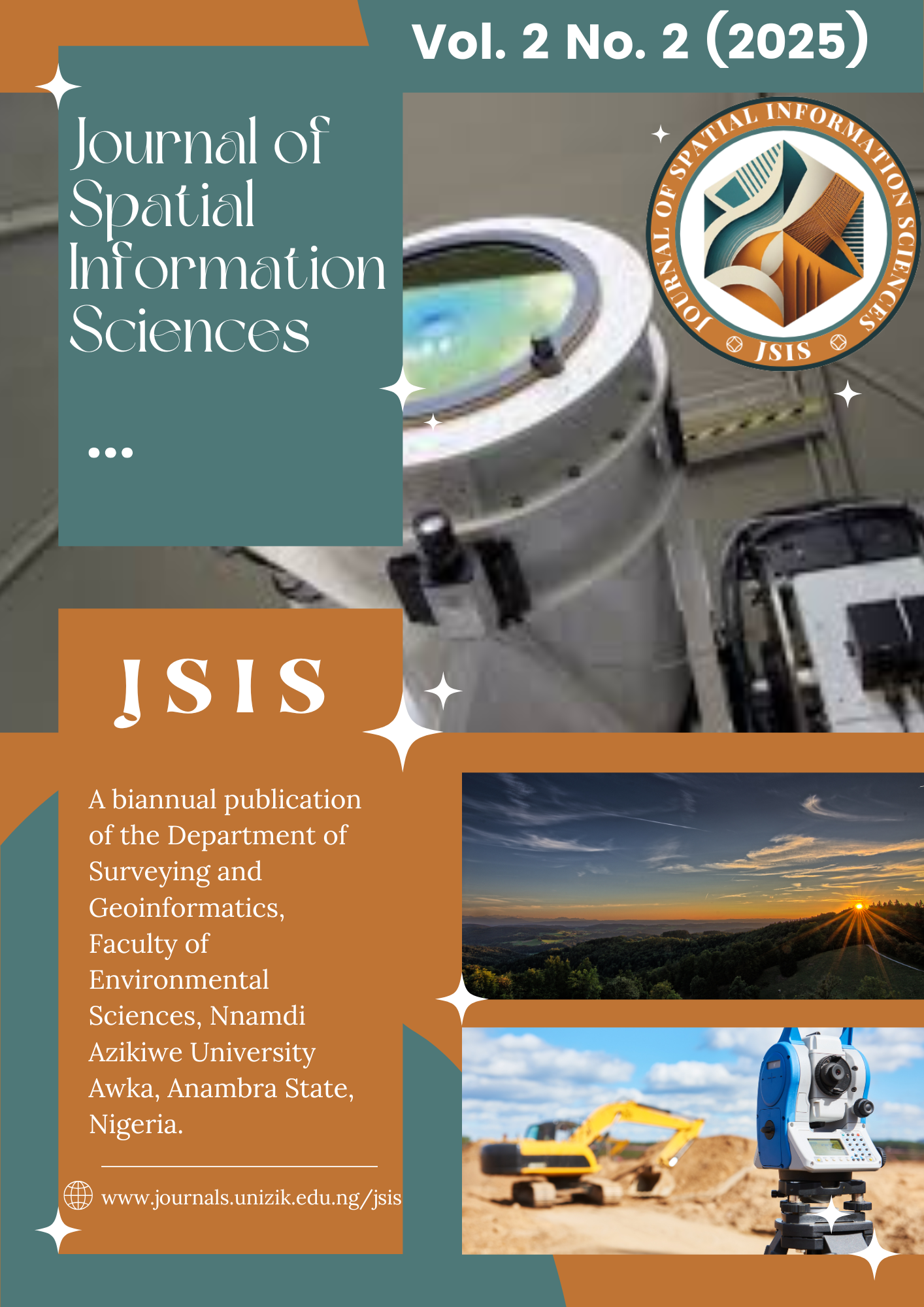Application of Convolutional Neural Network (CNN) in Identification and Mapping of Urban Road Network in Parts of Benin City, Nigeria Using Remotely Sensed Imagery
DOI:
https://doi.org/10.5281/Keywords:
Convolutional Neural Network (CNN), U-Net, UAV imagery, road network extraction, urban planning, Benin City, semantic segmentation, deep learning, remote sensingAbstract
Accurate mapping of urban road networks is critical for sustainable urban planning, efficient transportation management, and disaster response. This study presents an automated approach for urban road network extraction using Convolutional Neural Networks (CNNs) applied to high-resolution unmanned aerial vehicle (UAV) imagery of Benin City, Nigeria. UAV data were captured using the DJI Matrice 100 platform equipped with a Zen muse X5 camera, providing imagery at a spatial resolution of 10–15 cm. Following comprehensive preprocessing steps—comprising noise reduction, calibration, image enhancement, georeferencing, orthorectification, and mosaicking—training datasets were generated through manual labeling and feature extraction using ArcGIS. The U-Net based CNN model was trained using 80% of the labeled data with the remaining 20% reserved for testing. Data augmentation techniques were employed to enhance model generalization and mitigate over fitting. Model evaluation demonstrated robust performance, achieving a validation accuracy of 91.3%, mean Intersection over Union (IoU) of 0.834, precision of 0.89, recall of 0.85, and F1-score of 0.87. The trained model exhibited computational efficiency, processing images at an average of 127 ms per image using 2.84 GB of GPU memory. Beyond road extraction, the model successfully classified additional urban land cover classes, including buildings, bare ground, vegetation, and water bodies, yielding an overall dataset quality rating of 8.8/10. The study highlights the potential of deep learning models in providing scalable, accurate, and efficient solutions for urban infrastructure mapping.
Downloads
Published
Issue
Section
License

This work is licensed under a Creative Commons Attribution-ShareAlike 4.0 International License.





